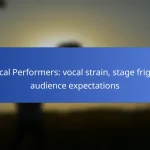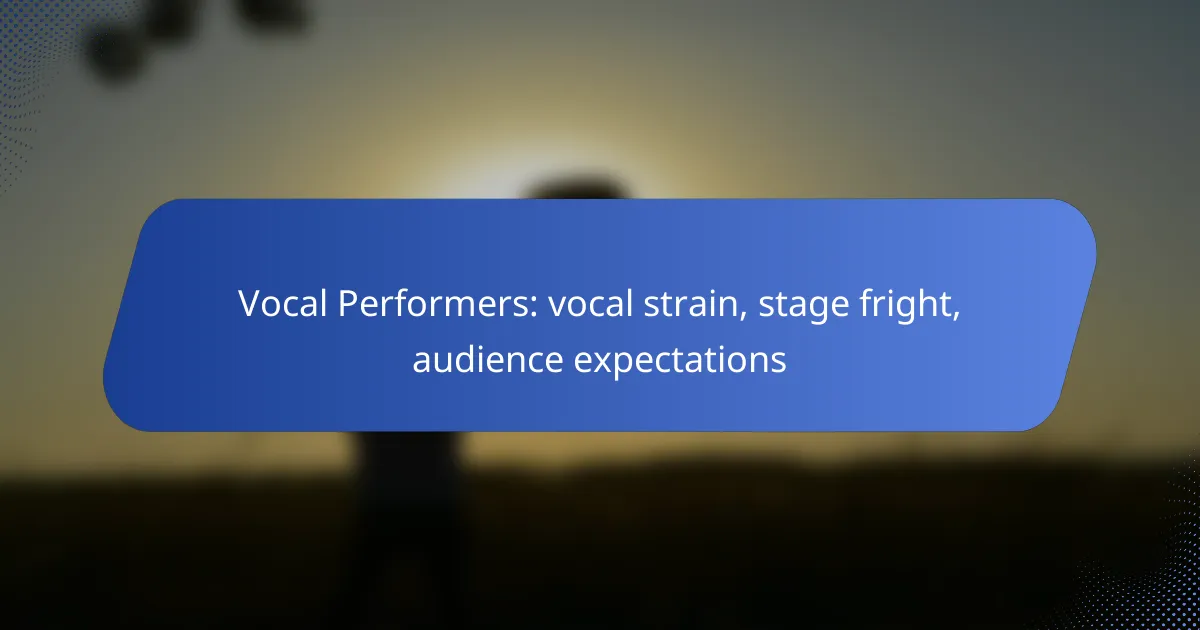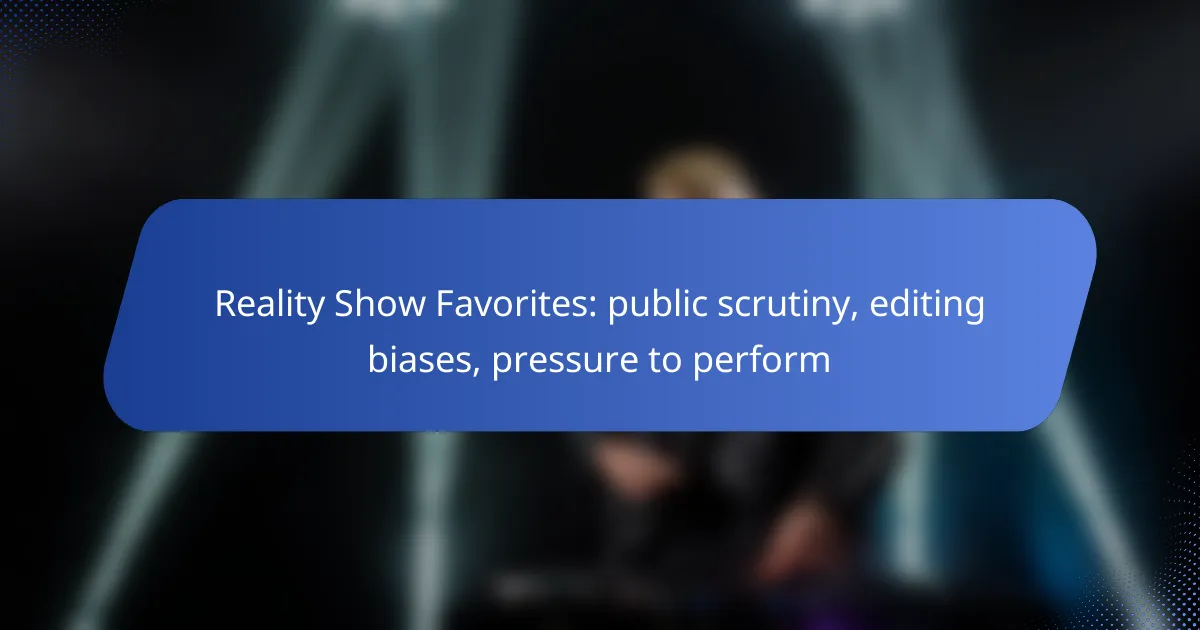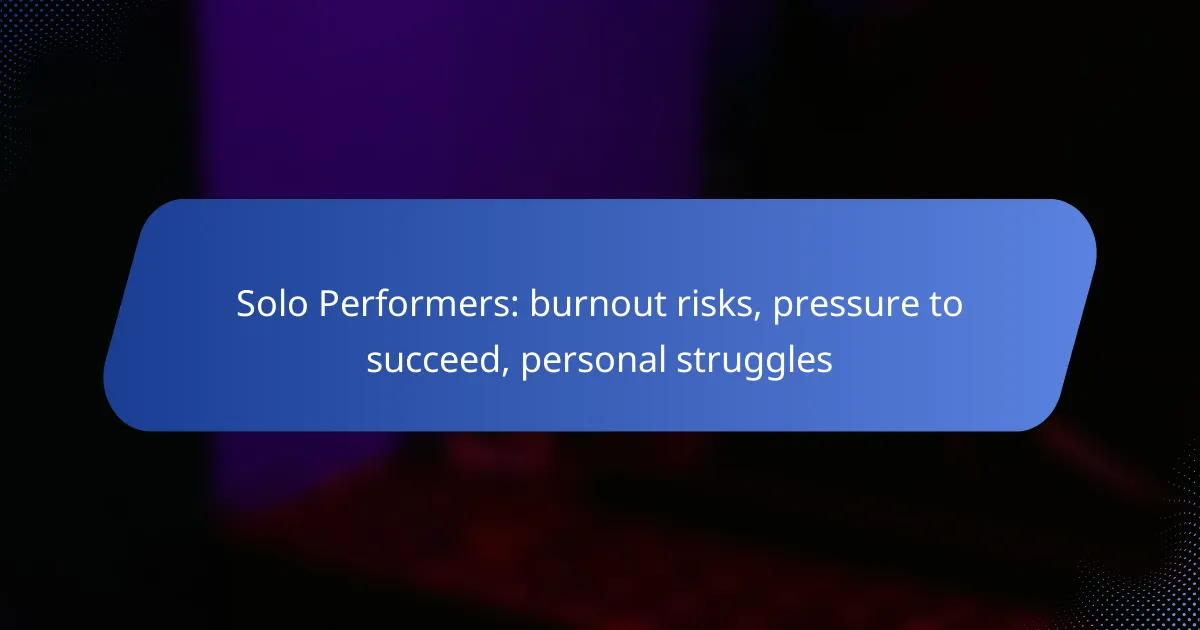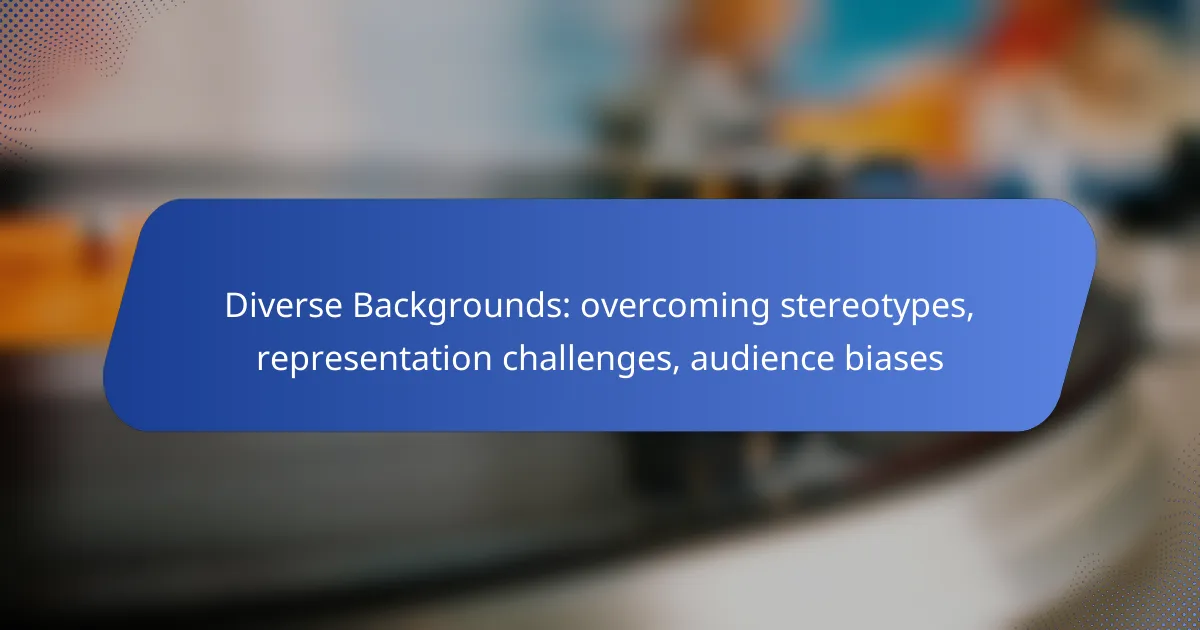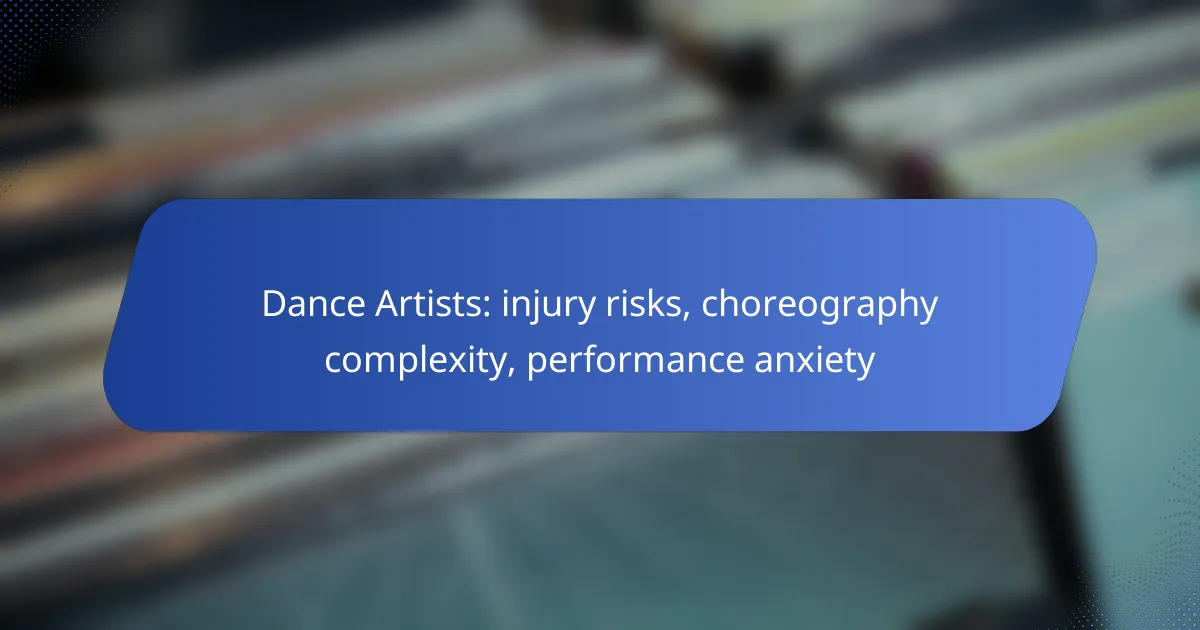Vocal performers face unique challenges, including the risk of vocal strain, the pressure of audience expectations, and the anxiety of stage fright. By implementing effective hydration and warm-up techniques, they can safeguard their vocal health while enhancing their performance quality. Additionally, managing stage fright through various strategies can help build confidence and focus, allowing performers to connect more deeply with their audience. Understanding the influence of audience expectations is crucial, as it shapes the pressure to meet specific standards and impacts the overall delivery of their art.
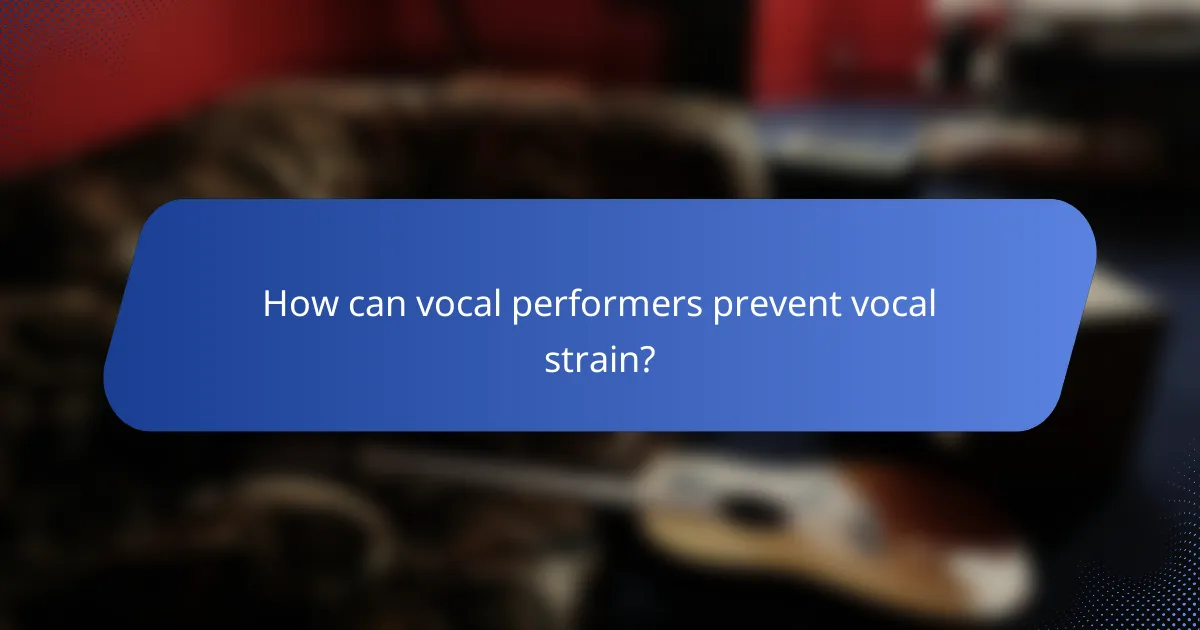
How can vocal performers prevent vocal strain?
Vocal performers can prevent vocal strain by adopting effective hydration, warm-up, and singing techniques, along with proper rest and guidance from vocal coaches. These practices help maintain vocal health and enhance performance quality.
Hydration techniques
Staying well-hydrated is crucial for vocal performers to keep their vocal cords lubricated and functioning optimally. Aim to drink at least 2 to 3 liters of water daily, adjusting for factors like climate and activity level.
Consider incorporating herbal teas or warm water with honey to soothe the throat. Avoid excessive caffeine and alcohol, as they can lead to dehydration.
Vocal warm-up exercises
Vocal warm-ups are essential for preparing the voice before performances or rehearsals. Simple exercises like humming, lip trills, and scales can help ease tension and improve vocal range.
Spend at least 10 to 15 minutes on warm-ups, gradually increasing intensity. This practice not only enhances vocal performance but also reduces the risk of strain.
Proper singing techniques
Using proper singing techniques is vital for preventing vocal strain. Focus on breath support, posture, and resonance to ensure that the voice is produced efficiently.
Engage your diaphragm while singing and avoid straining your throat. Consider recording your practice sessions to identify areas for improvement in technique.
Rest and recovery strategies
Rest is essential for vocal recovery. Make sure to schedule regular breaks during rehearsals and performances, allowing your voice to recuperate.
Aim for at least one full day of vocal rest each week, especially after intense singing. Avoid whispering, as it can strain the vocal cords more than speaking normally.
Use of vocal coaches
Working with a vocal coach can significantly enhance a performer’s technique and reduce the risk of strain. A coach can provide personalized feedback and strategies tailored to individual vocal needs.
Investing in lessons can help identify bad habits and teach effective practices, making it a worthwhile consideration for serious vocal performers.
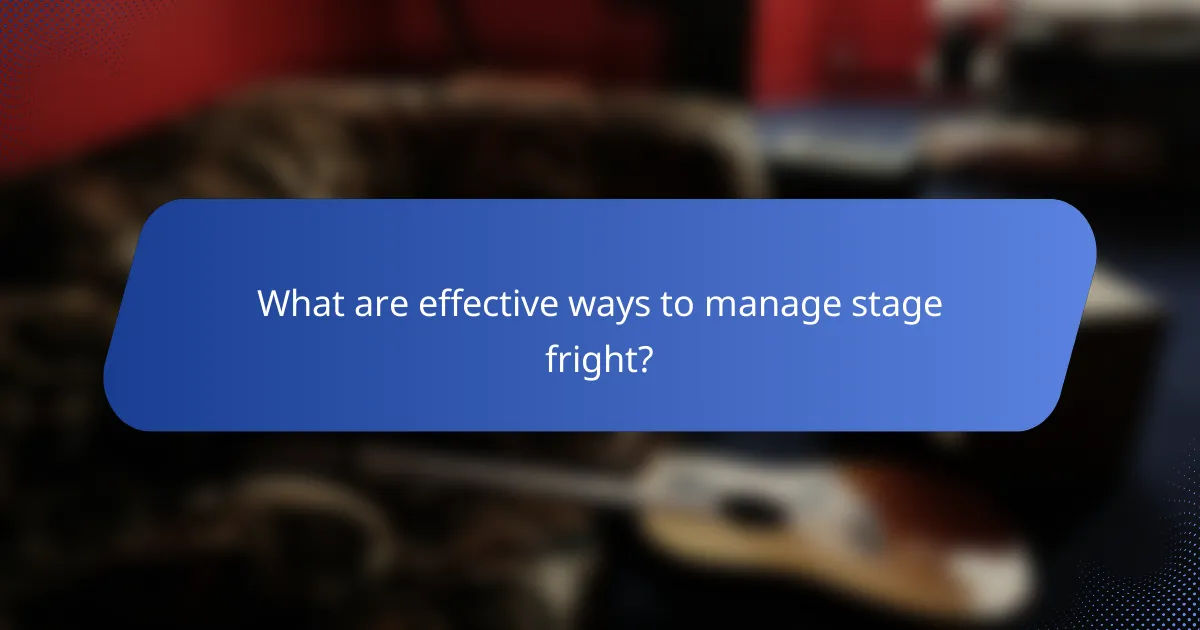
What are effective ways to manage stage fright?
Effective ways to manage stage fright include various techniques that help performers reduce anxiety and build confidence before and during their performances. These methods can enhance focus, promote relaxation, and create a more positive mindset.
Breathing exercises
Breathing exercises are essential for calming nerves and regulating anxiety levels. Practicing deep, diaphragmatic breathing can slow your heart rate and promote a sense of tranquility. Aim to inhale deeply through your nose for a count of four, hold for four, and exhale slowly through your mouth for a count of six.
Incorporate these exercises into your routine before performances, spending a few minutes focusing solely on your breath. This can help ground you and prepare your mind for the stage.
Visualization techniques
Visualization techniques involve imagining a successful performance in detail, which can significantly reduce anxiety. Picture yourself on stage, feeling confident and receiving positive feedback from the audience. This mental rehearsal can create a sense of familiarity and comfort.
Spend a few minutes each day visualizing your performance, focusing on the sights, sounds, and emotions you will experience. This practice can help build confidence and reduce the fear of the unknown.
Gradual exposure practices
Gradual exposure practices involve slowly increasing your comfort level with performing in front of others. Start by practicing in front of a mirror, then progress to friends or family, and eventually larger groups. This step-by-step approach helps desensitize you to the anxiety associated with performing.
Set achievable goals for each exposure, such as performing a short piece for a small group. Gradually increase the audience size and complexity of the performance as you become more comfortable.
Mindfulness and relaxation methods
Mindfulness and relaxation methods can help you stay present and reduce anxiety during performances. Techniques such as meditation, yoga, or progressive muscle relaxation can promote a sense of calm and focus. Incorporate these practices into your daily routine to build resilience against performance anxiety.
Consider dedicating a few minutes each day to mindfulness exercises, focusing on your body and breath. This can help you remain centered and composed when facing an audience.
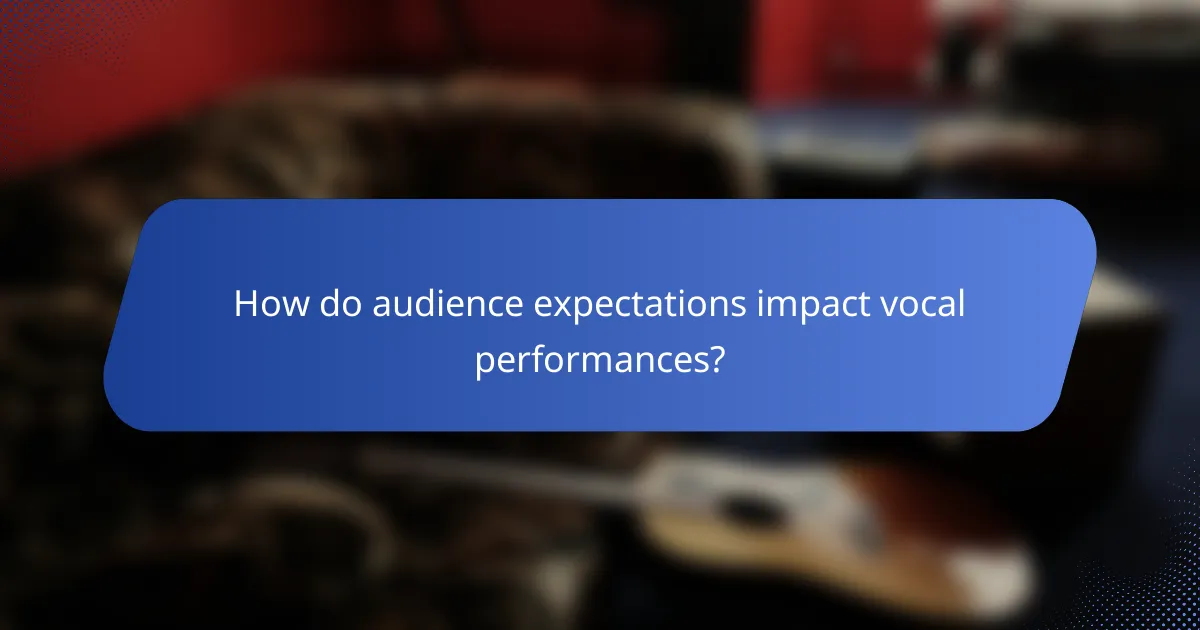
How do audience expectations impact vocal performances?
Audience expectations significantly influence vocal performances by shaping the pressure performers feel to meet specific standards. These expectations can stem from the venue, the genre of music, or the reputation of the artist, impacting both the delivery and the emotional connection of the performance.
Understanding audience demographics
Recognizing the demographics of an audience is crucial for tailoring a vocal performance. Factors such as age, cultural background, and musical preferences can dictate what the audience anticipates. For instance, a younger crowd may expect high-energy pop songs, while an older audience might prefer classic ballads.
Performers can gather insights about their audience through social media engagement, ticket sales data, and pre-show surveys. This information helps in crafting a setlist that resonates with the crowd, enhancing overall satisfaction.
Adapting performance styles
Adapting performance styles to meet audience expectations can involve altering vocal techniques, stage presence, and even song arrangements. For example, a performer might choose to sing a slower, more emotional rendition of a popular song if the audience appears to be more reflective.
Flexibility is key; performers should be prepared to adjust their delivery based on real-time audience reactions. This can include varying vocal intensity, changing the pacing of songs, or incorporating audience participation to create a more engaging experience.
Engagement strategies
Effective engagement strategies can significantly enhance the connection between performers and their audience. Techniques such as storytelling, interactive elements, and direct audience address can create a more immersive experience. For instance, sharing personal anecdotes related to a song can foster a deeper emotional bond.
Additionally, using visual elements like lighting and stage design can complement vocal performances, making them more memorable. Performers should also consider incorporating social media interactions, encouraging fans to share their experiences live, which can further elevate audience engagement.
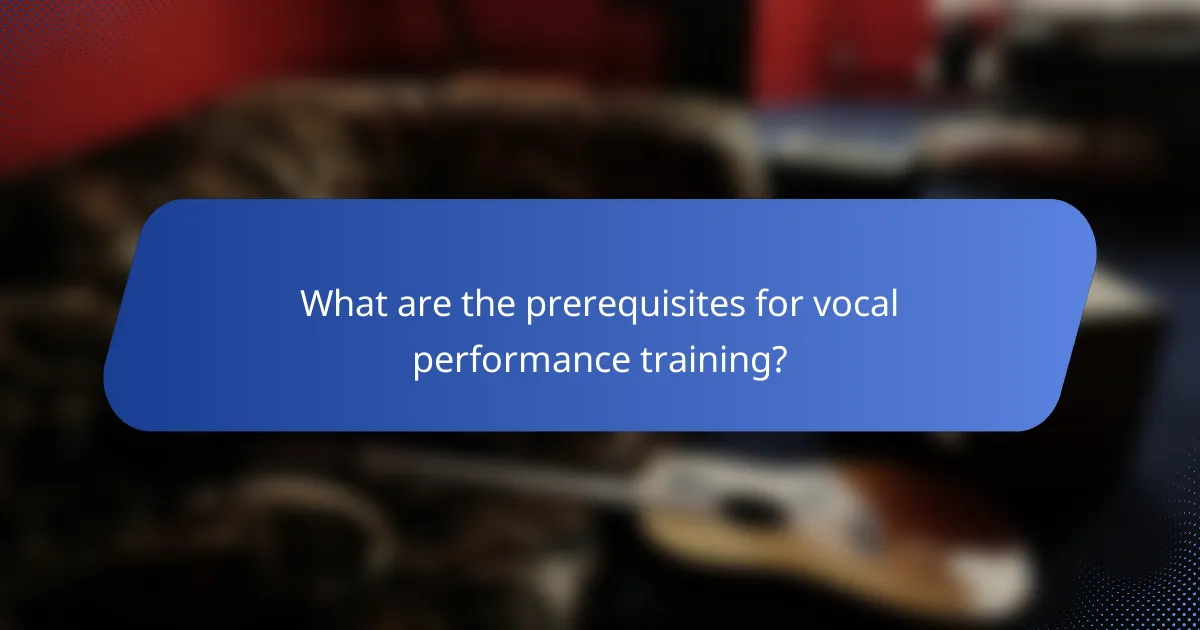
What are the prerequisites for vocal performance training?
Vocal performance training requires a blend of foundational skills and physical readiness. Key prerequisites include a grasp of basic music theory and a commitment to maintaining physical fitness, both of which support vocal health and performance quality.
Basic music theory knowledge
Understanding basic music theory is essential for vocal performers as it enhances their ability to read music, recognize scales, and interpret rhythms. Familiarity with concepts such as pitch, harmony, and dynamics enables singers to collaborate effectively with musicians and adapt to various musical styles.
Consider starting with fundamental elements like the musical staff, note values, and key signatures. This foundational knowledge will facilitate smoother learning of more complex musical pieces and improve overall performance. Resources like online courses or local music classes can provide structured learning opportunities.
Physical fitness requirements
Physical fitness plays a crucial role in vocal performance, as a strong body supports breath control and stamina. Singers should engage in regular cardiovascular exercise, strength training, and flexibility routines to enhance their overall physical condition, which directly impacts vocal delivery.
Aim for a balanced fitness regimen that includes activities like running, swimming, or yoga. These exercises can improve lung capacity and posture, both vital for effective singing. Additionally, staying hydrated and maintaining a healthy diet are essential for vocal health and endurance during performances.
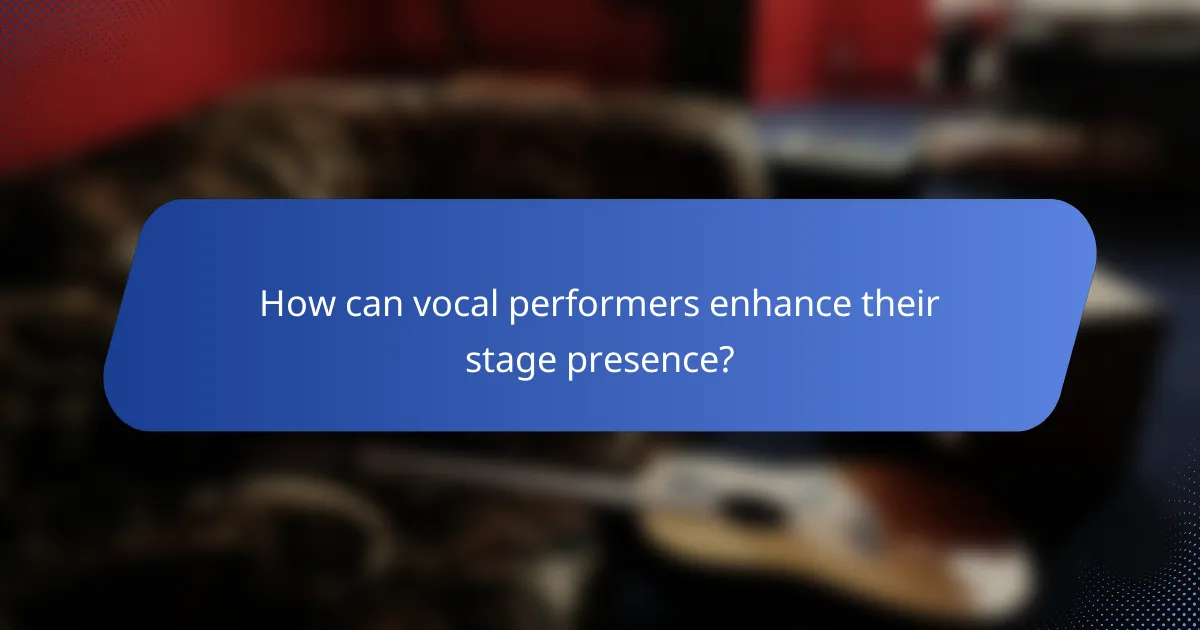
How can vocal performers enhance their stage presence?
Vocal performers can enhance their stage presence by mastering body language and establishing an emotional connection with their audience. These elements not only engage listeners but also create a memorable performance that resonates beyond the stage.
Body language techniques
Effective body language is crucial for vocal performers as it conveys confidence and engages the audience. Techniques include maintaining an open posture, using purposeful gestures, and making eye contact with different sections of the audience. These actions help to create a connection and draw listeners into the performance.
Additionally, performers should be mindful of their movements. Subtle shifts, like stepping forward during a powerful lyric or using hand gestures to emphasize a point, can enhance the emotional impact of the song. Practicing these techniques in front of a mirror or recording oneself can provide valuable feedback.
Emotional connection with the audience
Building an emotional connection with the audience is essential for vocal performers. This can be achieved by sharing personal stories related to the song or expressing genuine feelings through facial expressions and vocal delivery. When the audience feels the performer’s passion, they are more likely to engage deeply with the performance.
Performers can also invite audience participation, such as encouraging clapping or singing along. This interaction fosters a sense of community and makes the experience more memorable for everyone involved. Understanding the audience’s mood and adjusting the performance accordingly can further strengthen this connection.


